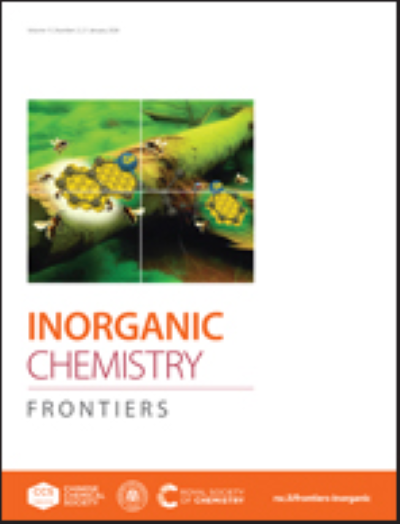Star-Shaped Pt(II) Complexes with Excellent Optical Power Limiting Performance and Their Flexible Optical Limiters†
IF 6.4
1区 化学
Q1 CHEMISTRY, INORGANIC & NUCLEAR
引用次数: 0
Abstract
Efficient optical power limiting (OPL) materials are crucial for protecting optical devices and eyes; however, the development of OPL materials with strong OPL response, high transparency, and easy processability still faces many challenges. This study presents a strategy to enhance the OPL performance of Pt(II) complexes (Pt-1a–Pt-2c) by increasing the number of metal centers and tailoring the electronic interactions between the cores and ethynyl ligands. The trinuclear Pt centers significantly extend the triplet-state lifetimes (0.52-2.05 μs) and enhance excited-state absorption (ESA), while the core-ethynyl ligand electronic interplays further modulate the ground- and excited-state properties of Pt-1a–Pt-2c, collectively improving OPL performance. Under ns pulsed laser irradiation, they exhibit tunable nonlinear optical (NLO) and OPL properties at 532 nm, with minimum normalized transmittance (Tmin) of 0.38-0.78. Among them, Pt-2b achieves superior OPL performance, with a nonlinear absorption coefficient (βeff) and optical limiting threshold (FOL) of 192.15 cm GW-1 and 0.71 J cm-2, respectively. In flexible films, Pt-2b@PDMS-1.00 wt% exhibits markedly enhanced OPL performance (βeff = 965.83 cm GW-1, FOL = 0.26 J cm-2), surpassing many reported OPL materials. This study provides valuable insights into improving the OPL responses of highly transparent Pt(II) complexes, while the fabrication of flexible films further broadens their potential applications in flexible photonic devices.具有优异光功率限制性能的星形Pt(II)配合物及其柔性光限制器
高效的光功率限制(OPL)材料是保护光学器件和眼睛的关键;然而,开发具有强OPL响应、高透明度和易于加工的OPL材料仍然面临许多挑战。本研究提出了一种通过增加金属中心数量和调整核心与乙基配体之间的电子相互作用来提高Pt(II)配合物(Pt-1a - Pt-2c) OPL性能的策略。三核Pt中心显著延长了三态寿命(0.52 ~ 2.05 μs),增强了激发态吸收(ESA),而核心-乙基配体电子相互作用进一步调节了Pt-1a - Pt-2c的基态和激发态性质,共同提高了OPL性能。在ns脉冲激光照射下,它们在532 nm处表现出可调谐的非线性光学(NLO)和OPL特性,最小归一化透过率(Tmin)为0.38 ~ 0.78。其中,Pt-2b具有较好的OPL性能,非线性吸收系数(βeff)和光限阈值(FOL)分别为192.15 cm GW-1和0.71 J cm-2。在柔性薄膜中,Pt-2b@PDMS-1.00 wt%表现出明显增强的OPL性能(βeff = 965.83 cm GW-1, FOL = 0.26 J cm-2),超过了许多报道的OPL材料。该研究为提高高透明Pt(II)配合物的OPL响应提供了有价值的见解,而柔性薄膜的制备进一步拓宽了其在柔性光子器件中的潜在应用。
本文章由计算机程序翻译,如有差异,请以英文原文为准。
求助全文
约1分钟内获得全文
求助全文
来源期刊

Inorganic Chemistry Frontiers
CHEMISTRY, INORGANIC & NUCLEAR-
CiteScore
10.40
自引率
7.10%
发文量
587
审稿时长
1.2 months
期刊介绍:
The international, high quality journal for interdisciplinary research between inorganic chemistry and related subjects
 求助内容:
求助内容: 应助结果提醒方式:
应助结果提醒方式:


